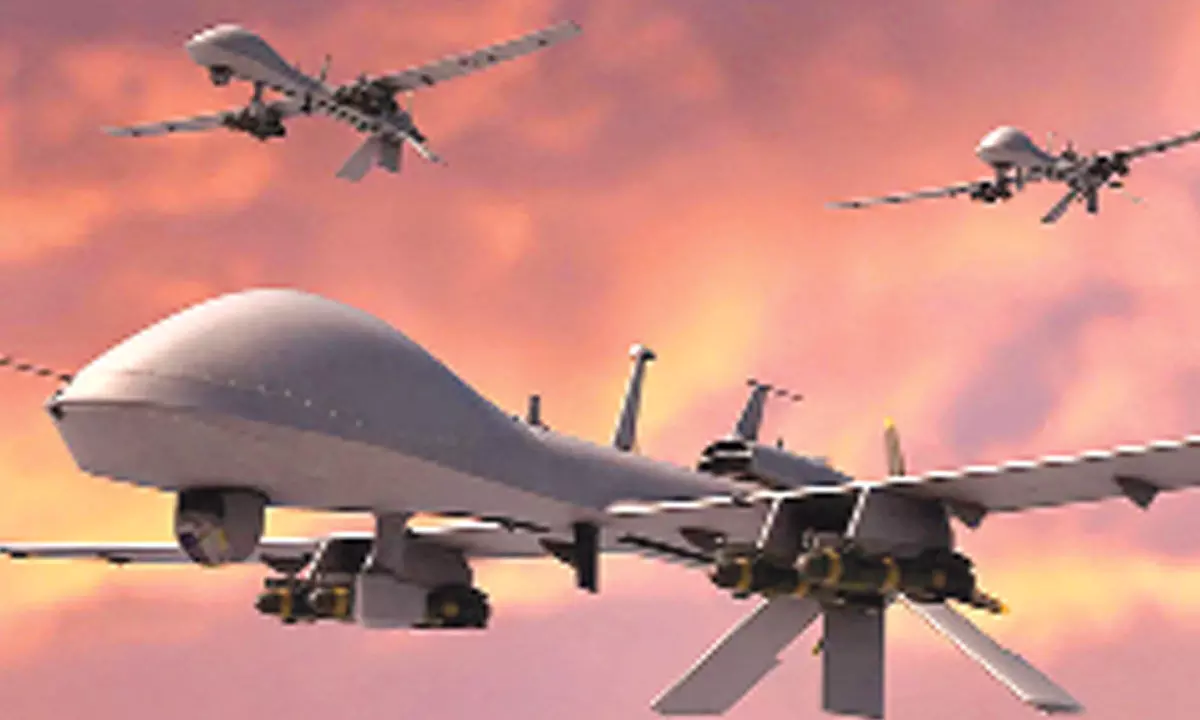How significance of border is declining in high-tech world
Threats can come from anywhere and not only the neighbours. Cyberspace threats had already broken this barrier, says the book titled as ‘Strategic Challenges: India in 2030’
image for illustrative purpose

Mumbai: We are on the cusp of the seventh revolution that will be characterised by autonomy and speed. In this phase, borders and distances are not going to be important in Defence, as has been the case so far, says a book which has been recently released by Harper Collins.
In the shifting sands of contemporary geopolitics, this edited volume puts the spotlight firmly on urgent strategic challenges India is likely to face by the year 2030.
Threats can come from anywhere and not only the neighbours. Cyberspace threats had already broken this barrier, says the book titled as 'Strategic Challenges: India in 2030'. The book is edited by Jayadeva Ranade, who is a former additional secretary, RAW and a seasoned China analyst.
"The Covid-19 pandemic has exposed us to the dangers of biological weapons, which can impact us in ways we could not imagine earlier. Hypersonic weapons can bring any target on earth within one hour of strike capability. Precision strike capabilities can target individuals in any part of the world without significant collateral damage, for instance the killing of Qasem Soleimani, an Iranian major general, on January 3, 2020, via a drone strike," says an article by Prof Prabhat Ranjan, a nuclear fusion scientist who is currently working as the Vice Chancellor of DY Patil International University, Akurdi, Pune.
These developments have huge implications for India's security challenge in the next decade or so. There needs to be a fundamental change in defence strategy. We need to quickly bridge the gap in the way we treat military technologies Vs civilian technologies. In India, military technological developments have been mostly carried out under government-funded and controlled organisations, while civilian technologies have been developed or acquired by the industry. The contribution of the academic community in all of this has been minimal. Most of the projects have missed their deadlines by more than one or two decades and with major cost overruns, says the article titled as, 'Emerging and Disruptive Technologies'.
Security is basic for survival not only for individuals, but also for a society or a nation as a whole. At the individual level, this relates to food, health and physical security.
But at the societal/national level, the definition of security becomes enhanced and technology plays a big role in it. Technology has been used to protect nation from enemies and also to improve quality of life.
Disruptive technologies are those that build upon an established base of technologies and are either revolutionising warfare already or will do so in a short time span (5-10 years). Emerging technologies are those that explore brand new fields of study, but their use is currently very limited as their larger, disruptive effects are expected to be felt only over a longer time frame (10-20 years).
NavIC is now in league with the US, China and Russia as a recognised component of the World-Wide Radio Navigation System (WWRNS). It covers India and nearby regions, extending up to 1500 km, and consists of seven active satellites are located in the geostationary orbit (GEO) and four in the inclined geosynchronous orbit (IGSO).
5G would enable soldiers, vehicles, command posts, ships, satellites and other information about the operation underway. If we couple 5G networking with AI and machine learning, the potential for new application start to expand exponentially.
In the recent Russia-Ukraine conflict, hypersonic missiles have been used. Russia, China and the USA have already developed good capabilities, and India is also working on it. Today's air-to-air missiles can now range over 320 km and reach speeds of Mach 6, in some cases. However, future hypersonic missiles can put any target on earth in less than an hour of decision and launch, says the book.
Some of the other renowned authors who have contributed for the book include Kiran Karnik (former president, NASSCOM) and PS Raghavan (former chairman of India's National Security Advisory Board).

